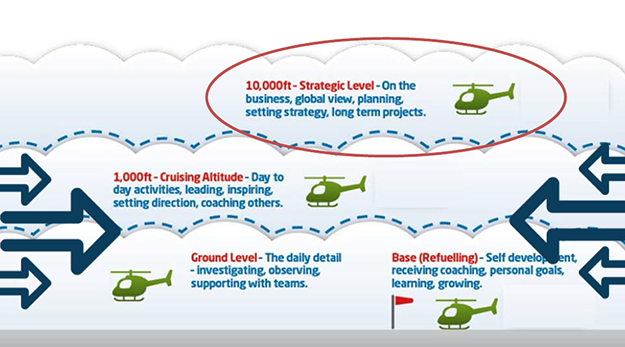Leading Through Disruption

The theme of the 2018 ARJE Annual Gathering is transformation in Jewish educational programs. Publisher David Behrman offers some insights on the subject.
The past decade has brought dramatic change to our community: changes in affiliation and ways of engagement, competition for the time of our parents and students, reduced budgets and class time, and technology. It seemed to start with the financial crisis of 2008-09, and many were waiting (some still are) for times to return to normal.
But the old days aren’t coming back. This is what Michael Lewis calls the “New Normal.” Or as a great New Yorker cartoon tells us: “You can’t change the channel—this is real life.”
The phenomena of disruptive change has been well-chronicled, as early as 1997, with “The Innovator’s Dilemma” by Clayton Christensen. And as difficult as it may be, it’s our job as educators to lead our organizations through this disruption. If we want to successfully navigate these times, we must do two things:
- 1. Recognize the disruption and identify what will be the New Normal
- 2. Firmly lead our organizations through a period of stress, and position them for this New Normal
This past July I taught management and leadership at Limmud South Africa, including a session on the “Five Landmines of Jewish Organizational Life.” In my view, the #1 landmine is inward focus, for it keeps us from seeing the changing world around us. Each day we show up at work and there are a hundred different demands on our time and attention. Requests, pleas, and sometimes threats to our organization and its stability come at us—it can be like drinking from a firehose. And so temptation abounds: to smooth out the way we currently operate, to become more efficient, to solve short-term problems.
“When you’re up to your neck in alligators, it’s hard to remember that you came to clear the marsh,” according to a well-known management dictum. These requests, pleas, and threats are the alligators that obscure our view and keep us from seeing the disruptive change around us.
The alligators keep us focused inward when we need to face outward.
Here are some of the ways we can face outward:
|
From: Inward Focus |
To: Facing the Disruptive World |
|
Doing existing things more efficiently |
Doing new things |
|
Protecting what we have |
Evolving into something we are not |
|
Self-assessment |
External evaluation |
|
Getting it done quickly in a way we’re used to |
Finding something new, trying it, maybe making a mistake |
What, then are the practices that can help us—individually and as organizational leaders—turn our attention to the outside world—to the children and adults we serve, to understand their needs? And the needs of people we could serve, who we may not even be in communication with?
Start by taking a helicopter view.

On a regular basis, get your head out of the weeds, set aside the daily demands on your time and attention, and look at key areas from a higher perspective:
Our customers - Who is our school or congregation serving? What do they say they need (not what we think they need)? What's their assessment of how well we are meeting their needs?
Our competition - Who else is doing what we do and how well do they do it? In what ways are they doing things better? What can we learn from them? And who else could come along tomorrow or next year to do what we do?
Our strengths - What’s unique about our school or congregation? What do we do better than anyone else? How are we sure our community agrees with that assessment?
Our challenges - What are our alligators? How can we keep them at bay, perhaps for an hour a day, or an afternoon a week, so we can see the larger world as it is, and as it will be next year?
David Behrman is President and CEO of Behrman House Publishers. Prior to joining Behrman House, he was with the consulting firm McKinsey & Co., where among other practice areas he was a member of the Change Management practice.
Don’t forget to subscribe to our newsletter and connect with us on social media!



